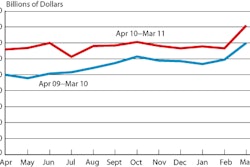appsFX, a provider of BlackBerry smartphone applications for both business and personal use, has launched LifeSaver Enterprise, an enhanced version of its LifeSaver distracted driving software. This latest release is designed to provide fleet and Risk Managers an automated solution to help combat the growing risk and liability their organizations face daily by distracted and inattentive fleet drivers.
“Just blocking the ability to text and e-mail are an important step toward reducing the number of distracted driving crashes and, in turn, the costs associated with them,” says Angelo Ponzi, chief marketing officer of appsFX. “This is the key function and benefit of LifeSaver. However, feedback from our customers told us they wanted LifeSaver to be a productivity tool as well.”
LifeSaver Enterprise offers a cost-effective means to mitigate risk and drastically reduce the liabilities created by distracted driving accidents. As a deterrent against driving distracted resulting from cell phone use, LifeSaver Enterprise (LSE) for BlackBerry smartphones uses GPS to determine the speed of the vehicle. Based on a pre-set speed, LSE is designed to assume control of the phone and eliminate the ability to use it except in a 911 emergency; phone use then is returned once the vehicle comes to a stop.
LifeSaver Enterprise also is designed to give business owners and fleet managers the ability to monitor and receive automated reports based on criteria such as hours of service, vehicle speed, vehicle/device location, GPS signal health and device battery strength, and also considers device use by employees who are riding as a passenger and phone useage options during nonwork hours. Corporate policy management, security compliance levels and app configuration all may be controlled completely through a BlackBerry Enterprise Server (BES/BESX) or the appsFX Cloud Management for Mobile Apps system.
“Implementation of LifeSaver Enterprise is designed to save lives,” Ponzi says. “But once implemented, it also provides added value to any company by potentially reducing insurance losses, preventing unnecessary lawsuits, minimizing worker comp claims, enforcing and reinforcing corporate policies, complying with federal and state distracted driving laws, protecting the company’s brand image and reputation, protecting business assets and providing a safe work environment for employees required to drive any type of work-related vehicle.”











